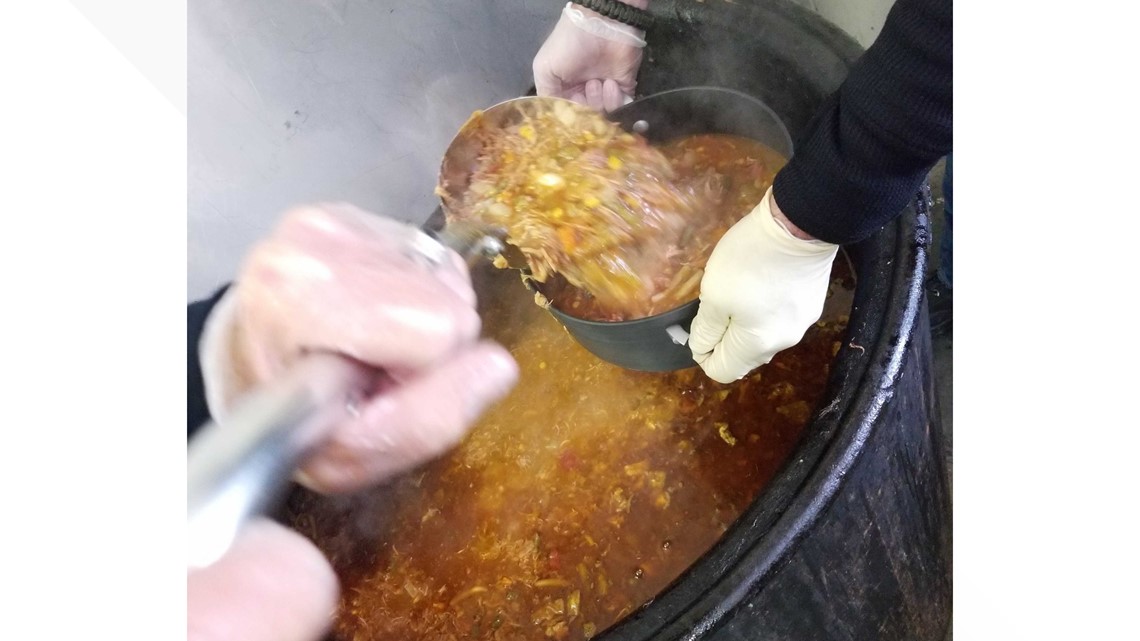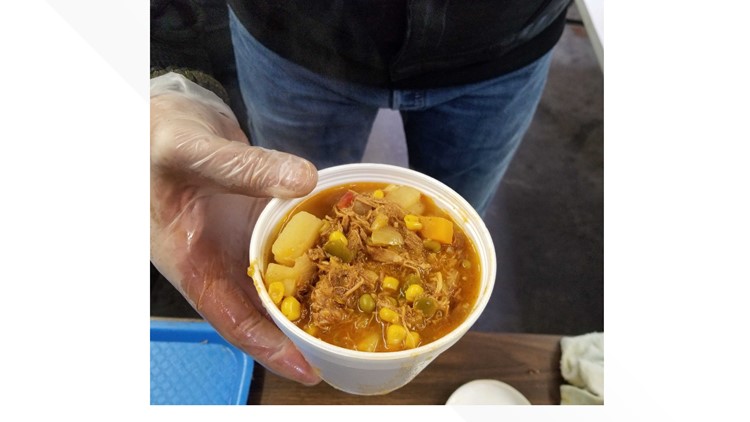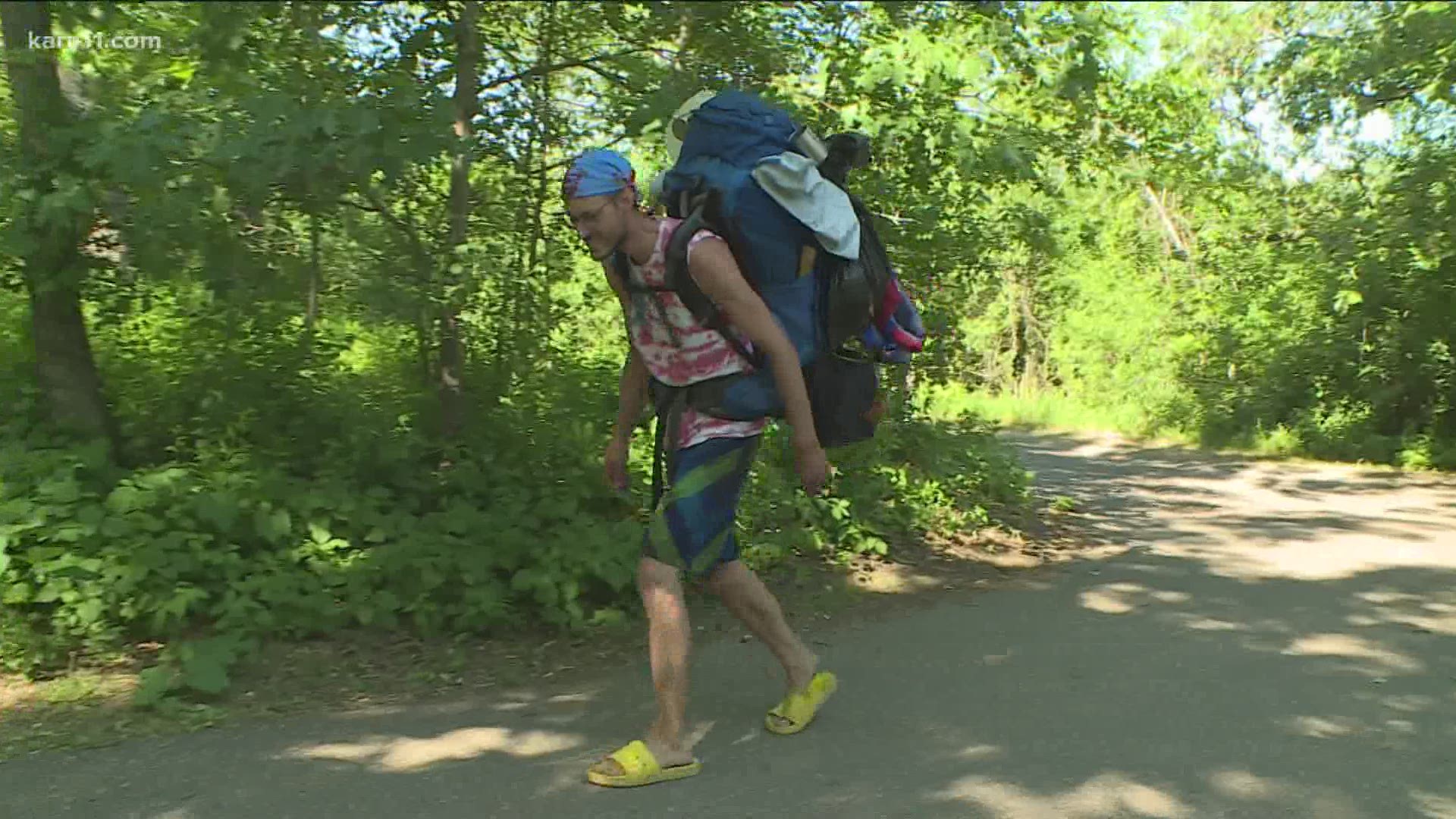ST PAUL, Minn. — Listen to the podcast here | Apple | Spotify | Stitcher | Google Play
If you drove through St. Paul or the surrounding area in October, you couldn’t miss the signs popping up near the roads in every neighborhood. The B-Dale Club, the American Legion, and everyone’s local parish was hosting a booya.
A what now?
I’ve lived in St. Paul for more than a year, but spent the first twelve years of my life in southern Minnesota. I’d never heard of a booya before, as a food or an event. I watched the metro Facebook foodie groups light up with people asking for the location of the next booya, asking if their favorite clubs were hosting the annual events.
As a lover of trying new local foods, I bookmarked a Google doc with a list of booyas across the metro and started making phone calls.
After a few inquiries I connected with the Commander of the Roseville VFW Post 7555, Doug Setley. Doug isn’t a fan of booya (the food) himself, as he thinks there are too many veggies. But he has years of experience in preparing it. He’s cooked it with family at his cabin up north, and the Roseville VFW has been cooking and selling booya for decades.
But before we dive too deeply into the cooking pots in the VFW’s booya shed, what is “booya,” exactly?
Author and food historian Patrice Johnson recently published a book about Minnesota food traditions, “Land of 10,000 Plates.” Even though her favorite northern food is decidedly lutefisk, she was able to offer some insight into the region’s history with booya.
Booya is a veggie-packed and hearty soup, usually prepared with several kinds of meat. It can include beef, chicken, and in traditional recipes, ox tail. Beans, tomatoes, potatoes, corn and other harvest staples fill the savory dish with a warmth and a weight that's a perfect balance to the chill fall air.
In the early days of booya in Minnesota, the preparation, cooking and serving of booya was solely the responsibility of men. Cooking can take a day or more, and recipes demand a stir of the brew every twenty minutes or so for as long as the booya is cooking.
In her research, Patrice found that there is no definitive origin of the soup. There are several possibilities about who may have brought it to the region, but no clear source. She also mentioned that the traditions of booya span across the upper Midwest, and every area from Michigan to Canada adds their own local twists.
As with many community foods, the meaty, veggie-packed soup has changed and evolved from the first ladleful to today.
Bars in St. Paul were the first recorded sellers of booya, using the salty soup to encourage their patrons to drink more beer. From there, the community embraced the food and more people began to cook their own booya.
Some of the magic and a tradition of booya is the secret recipe. Everyone has their own, and everyone closely guards their personal mix of spices and seasonings. The chef at the Roseville VFW actually keeps his recipe in a safe.
Fire halls, VFWs, American Legions and churches all started selling booya to raise funds in the 1900’s, and “booya” started to refer to the community event as much as the food being served. Music, games and baked goods joined booya on local menus.
The Roseville VFW held their annual booya early in October, just as the air was starting to feel crisp and cool. Hours before they were scheduled to begin their sale, hearty and hungry people lined up in jackets and masks, containers in hand. Booya was offered in 16 and 32 ounce cups and was sold by the scoop if you brought something to hold it.
Warm smells of cooking meat and vegetables rolled out of the shed’s open sale window as a small crew scooped soup into containers and cups. Three giant pots lined one wall of the concrete room, each of them standing as tall as a person’s waist. Long metal ladles moved steadily in and out of the reddish booya while the crew laughed and chatted through their cotton facemasks.


Commander Setley said that in a normal year they’ll sell out in 3-4 hours, with the last cups of soup often selling auction-style as people vie for the final tastes of booya before next fall. This year, even with social distancing measures restricting the annual gathering, Doug said the VFW's booya sold out in an hour and half, with nearly 80 people waiting in line turned away.
A theme that comes up again and again in the story of booya in Minnesota is community. It’s a food that requires a lot of attention to prepare and cook and is certainly done more easily with a group of people helping. Many kinds of meats and vegetables go into the pot, and since the beginning many cooks relied on neighbors to pitch in.
The more ingredients we put into the pot, the more food comes out for us all.
Listen to the podcast here | Apple | Spotify | Stitcher | Google Play
More That's So Minnesota:




